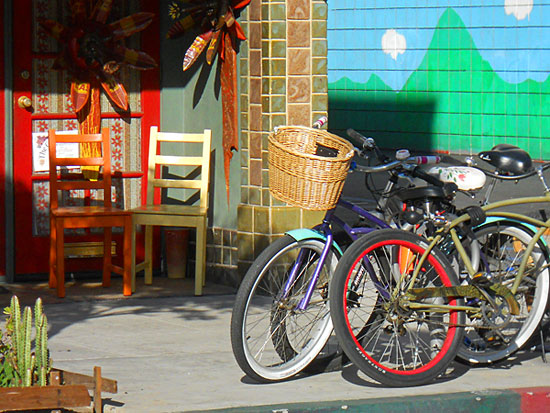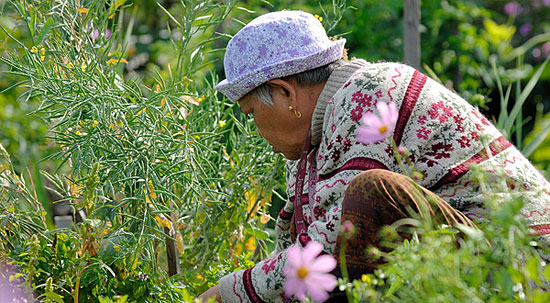Building healthier communities
January 24, 2012

A new ordinance means bike parking must be a part of new developments in unincorporated L.A. County.
What does the width of your sidewalk have to do with the diameter of your waistline?
What do shade trees have to do with how active you are?
And what does bicycle parking have in common with farmers markets and community gardens?
They’re all elements in Los Angeles County’s new Healthy Design Ordinance, initially approved by the Board of Supervisors Tuesday, and now receiving finishing touches from county attorneys.
The ordinance, expected to become law in March, represents part of a new and increasingly important partnership between planners and public health officials trying to fight an epidemic of obesity, diabetes and other diseases by making it easier for people to adopt a more active lifestyle.
To the delight of bicycle advocates, the new ordinance would require for the first time that bike parking be included in new developments in unincorporated parts of Los Angeles County. (Similar provisions are included the county’s proposed Bicycle Master Plan, which is expected to come before the board in coming weeks.)
To foster more walkable communities, the Healthy Design Ordinance also would mandate 5-foot wide sidewalks instead of the current 4-foot standard. And, to make sure those wider sidewalks are inviting, it would require that shade trees be included in future development plans.
It also seeks to bring healthy vegetables and fruits to so-called food deserts by making it easier for farmers markets and community gardens to take root in residential and other areas without a lot of red tape. And written into the ordinance is a requirement that those markets accept CalFresh payments.
Dr. Jonathan E. Fielding, the county’s top public health official, said his department was happy to have invested part of a 2010 grant it received from the federal Centers for Disease Control and Prevention to help get the Healthy Design Ordinance off the ground.
It’s all part of a shift in tactics to move disease prevention out of the doctor’s office and into the streets.
“If we want to improve the health of Angelenos, we need to start by improving our physical environment and our social environment,” Fielding said.
Supervisors praised the work that has been done so far.
“This is a big idea. This is forward-looking. This is progressive policy-making,” said Supervisor Mark Ridley-Thomas.
Board of Supervisors Chairman Zev Yaroslavsky, who initially proposed the measure along with Supervisor Don Knabe, also saluted the efforts. But he said the new ordinance is just a first step toward designing a healthier county.
“Much more needs to be done to create livable neighborhoods that do not rely solely on automobile transportation,” Yaroslavsky said. “County planners and engineers, and private developers, will have to make a concerted effort to achieve neighborhoods where people feel comfortable walking, biking, and taking transit.”
In a motion adopted along with the board’s vote Tuesday in favor of approving the ordinance, Yaroslavsky directed county staff to take a closer look at “zoning and land use policies that encourage sprawling developments which force people to drive vast distances just to get to work, or buy a gallon of milk.”
At the same time, the motion recognized that there are no one-size-fits-all approaches, and that not all healthy design features will apply to every community.
A rethinking of what planning can mean to the health of communities and individuals is “actually pretty exciting,” said Susan Tae, a supervising regional planner who led the Healthy Design team for Regional Planning. “To create a more pleasant environment is to encourage a pedestrian to take a walking trip rather than jump in a car.”
(For a look at some of the guidelines the team came up with in developing the ordinance, click here. And a two-minute summary of the ordinance’s main points is here.)
Tae said other initiatives, such as the upcoming Bicycle Master Plan and a new specific plan to create a more walkable area around Gold Line stations on the 3rd Street Corridor inEast L.A., will help move the spirit of the new ordinance forward.
Designing for health, she said, requires thinking like a walker or cyclist and constantly asking: “How do we create things at more of a pedestrian scale?”
“If it’s not comfortable,” Tae said, “then it’s not going to be used.”
Posted 1/24/12













 405 bridge work causes a stink
405 bridge work causes a stink
